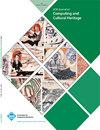写你想写的:将文本-视频检索应用于视听档案
IF 2.2
3区 计算机科学
Q3 COMPUTER SCIENCE, INTERDISCIPLINARY APPLICATIONS
引用次数: 0
摘要
音像档案作为我们文化资产的重要储存库,正受到无障碍问题的困扰。媒介本身的复杂性使得处理和交互在计算机视觉、多模态学习、人机交互以及文化和遗产领域仍然是一个开放的挑战。近年来,随着视频检索任务的增加,用自然语言检索视频内容的方法(文本到视频检索)受到了人们的广泛关注,并达到了一定的性能水平,在现实世界中得到了应用。虽然听起来很吸引人,但这种方法侧重于使用简单的以视觉为中心的视频描述来检索视频,并查找视频(如说明)。现在说这些方法将成为访问复杂视频内容并将其编码为高维数据的新范例还为时过早,但它们确实是为AV档案构建未来探索性界面的创新尝试和基础(例如,允许用户在档案中编写故事并检索相关片段,或对视频内容进行高级编码以实现可视化)。这项工作填补了应用空白,从实现的角度检查了这些文本到视频的检索方法,并提出并验证了一个分类器增强的工作流程,以便在处理可能与训练数据集不同的原位查询时获得更好的结果。然后,将这样的工作流应用于来自tsamuise Suisse Romande (RTS)的真实存档,以创建一个演示。最后,以人为本进行评价,以了解文本转视频检索方法是否改善了访问AV档案的整体体验。本文章由计算机程序翻译,如有差异,请以英文原文为准。
Write What You Want: Applying Text-to-video Retrieval to Audiovisual Archives
Audiovisual (AV) archives, as an essential reservoir of our cultural assets, are suffering from the issue of accessibility. The complex nature of the medium itself made processing and interaction an open challenge still in the field of computer vision, multimodal learning, and human-computer interaction, as well as in culture and heritage. In recent years, with the raising of video retrieval tasks, methods in retrieving video content with natural language (text-to-video retrieval) gained quite some attention and have reached a performance level where real-world application is on the horizon. Appealing as it may sound, such methods focus on retrieving videos using plain visual-focused descriptions of what has happened in the video and finding videos such as instructions. It is too early to say such methods would be the new paradigms for accessing and encoding complex video content into high-dimensional data, but they are indeed innovative attempts and foundations to build future exploratory interfaces for AV archives (e.g. allow users to write stories and retrieve related snippets in the archive, or encoding video content at high-level for visualisation). This work filled the application gap by examining such text-to-video retrieval methods from an implementation point of view and proposed and verified a classifier-enhanced workflow to allow better results when dealing with in-situ queries that might have been different from the training dataset. Such a workflow is then applied to the real-world archive from Télévision Suisse Romande (RTS) to create a demo. At last, a human-centred evaluation is conducted to understand whether the text-to-video retrieval methods improve the overall experience of accessing AV archives.
求助全文
通过发布文献求助,成功后即可免费获取论文全文。
去求助
来源期刊

ACM Journal on Computing and Cultural Heritage
Arts and Humanities-Conservation
CiteScore
4.60
自引率
8.30%
发文量
90
期刊介绍:
ACM Journal on Computing and Cultural Heritage (JOCCH) publishes papers of significant and lasting value in all areas relating to the use of information and communication technologies (ICT) in support of Cultural Heritage. The journal encourages the submission of manuscripts that demonstrate innovative use of technology for the discovery, analysis, interpretation and presentation of cultural material, as well as manuscripts that illustrate applications in the Cultural Heritage sector that challenge the computational technologies and suggest new research opportunities in computer science.
 求助内容:
求助内容: 应助结果提醒方式:
应助结果提醒方式:


